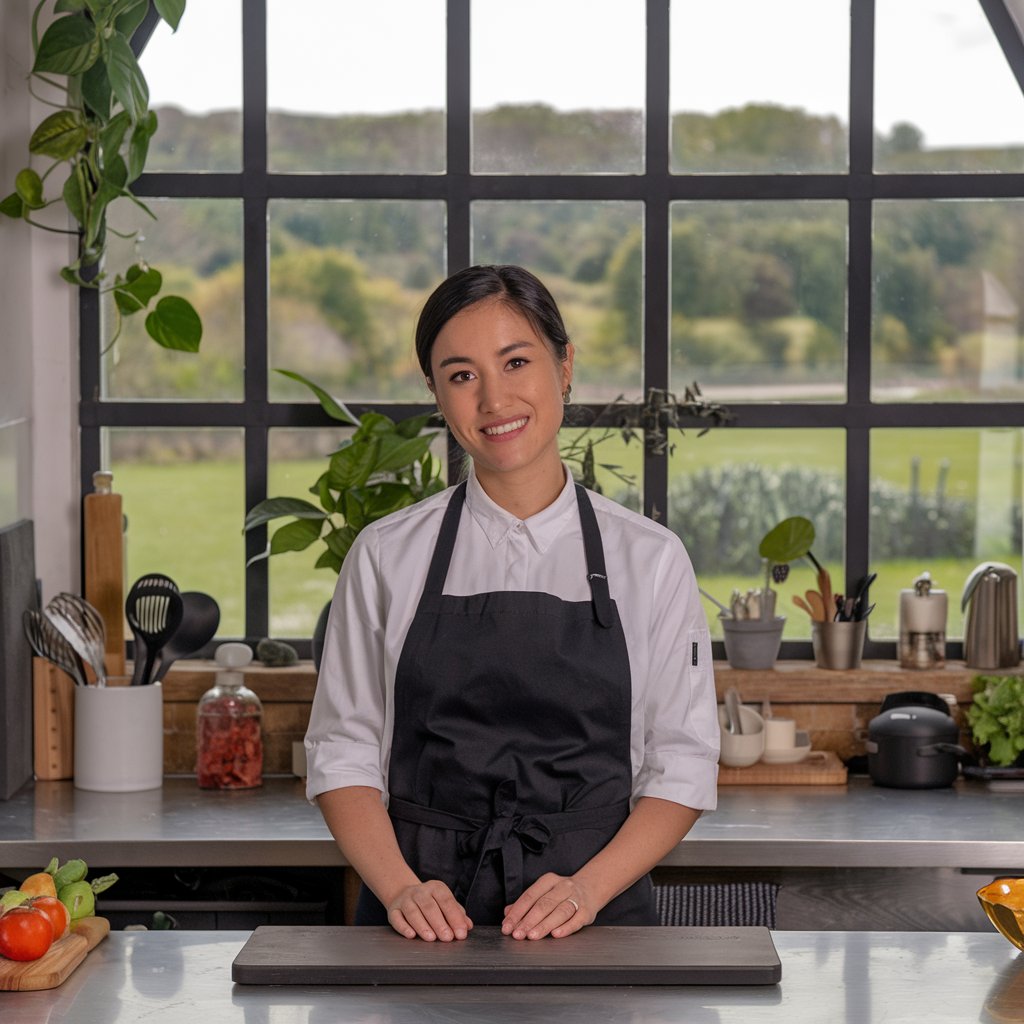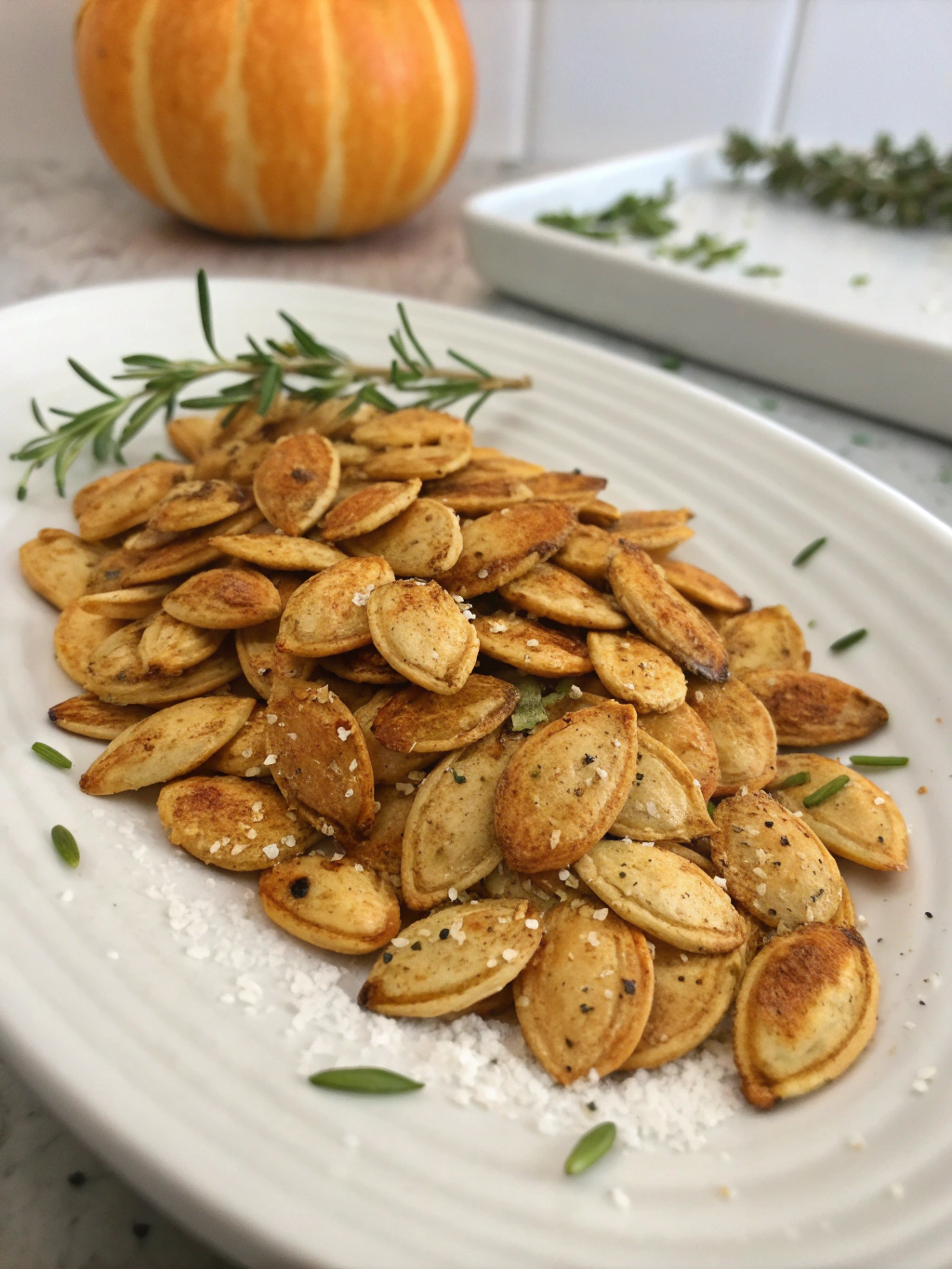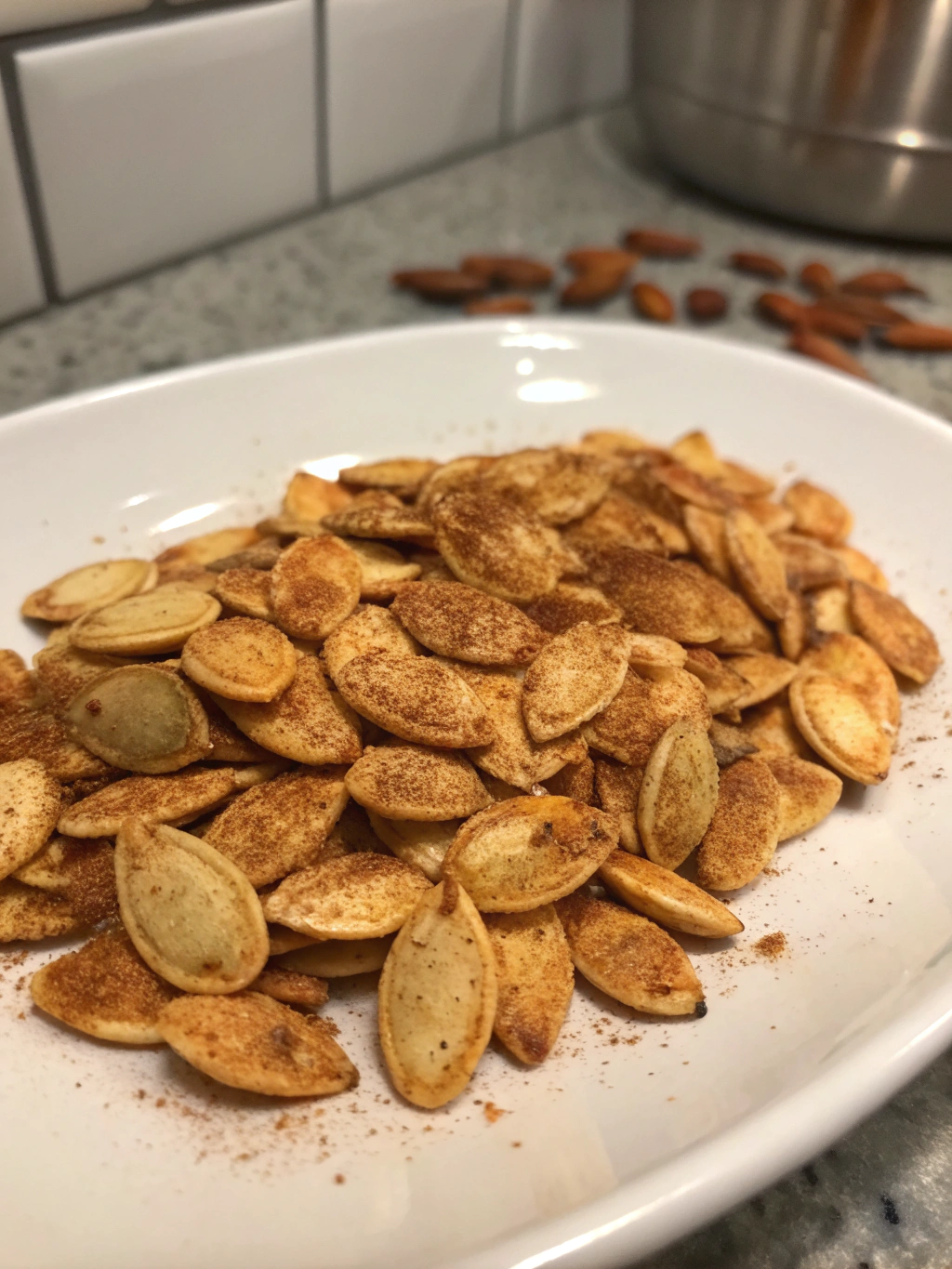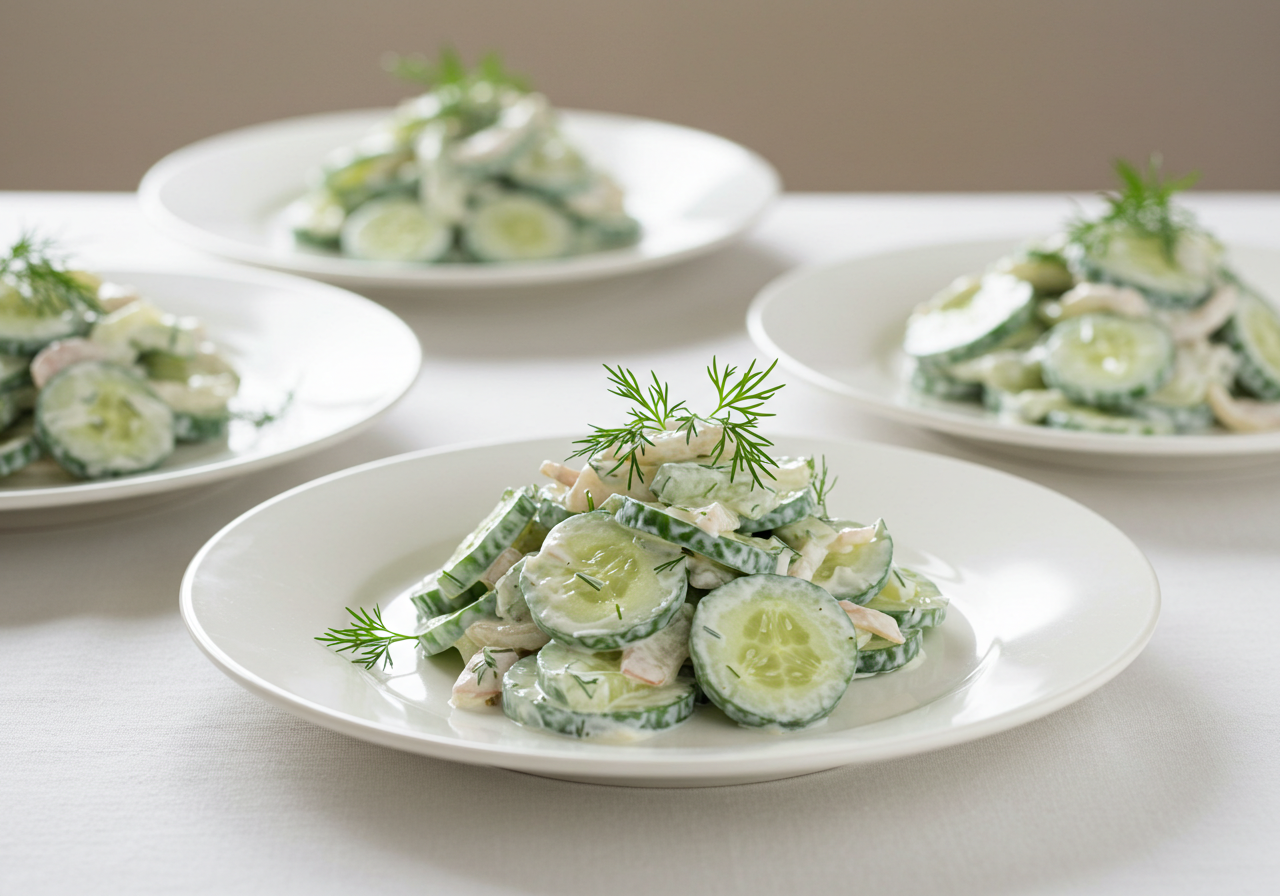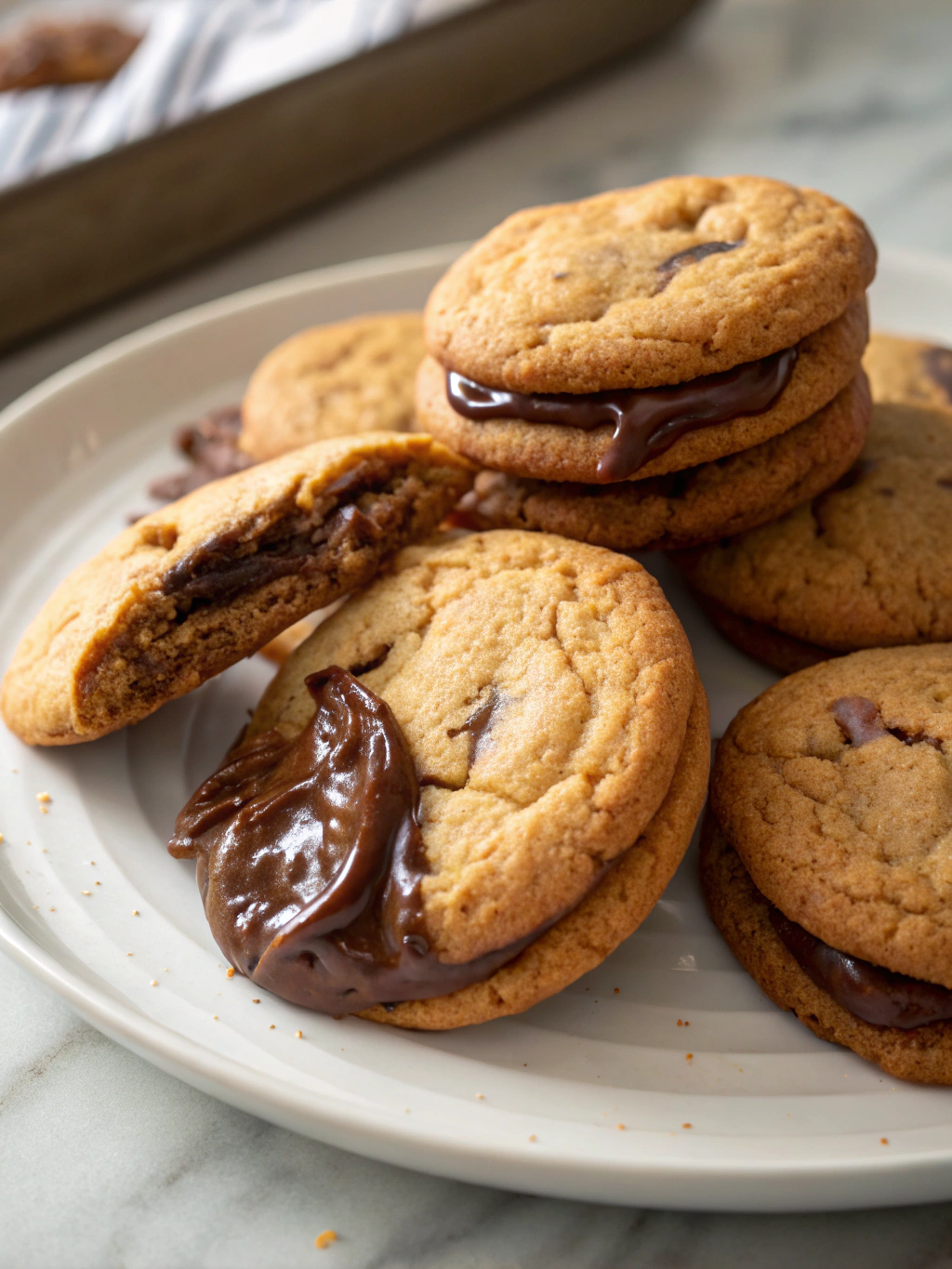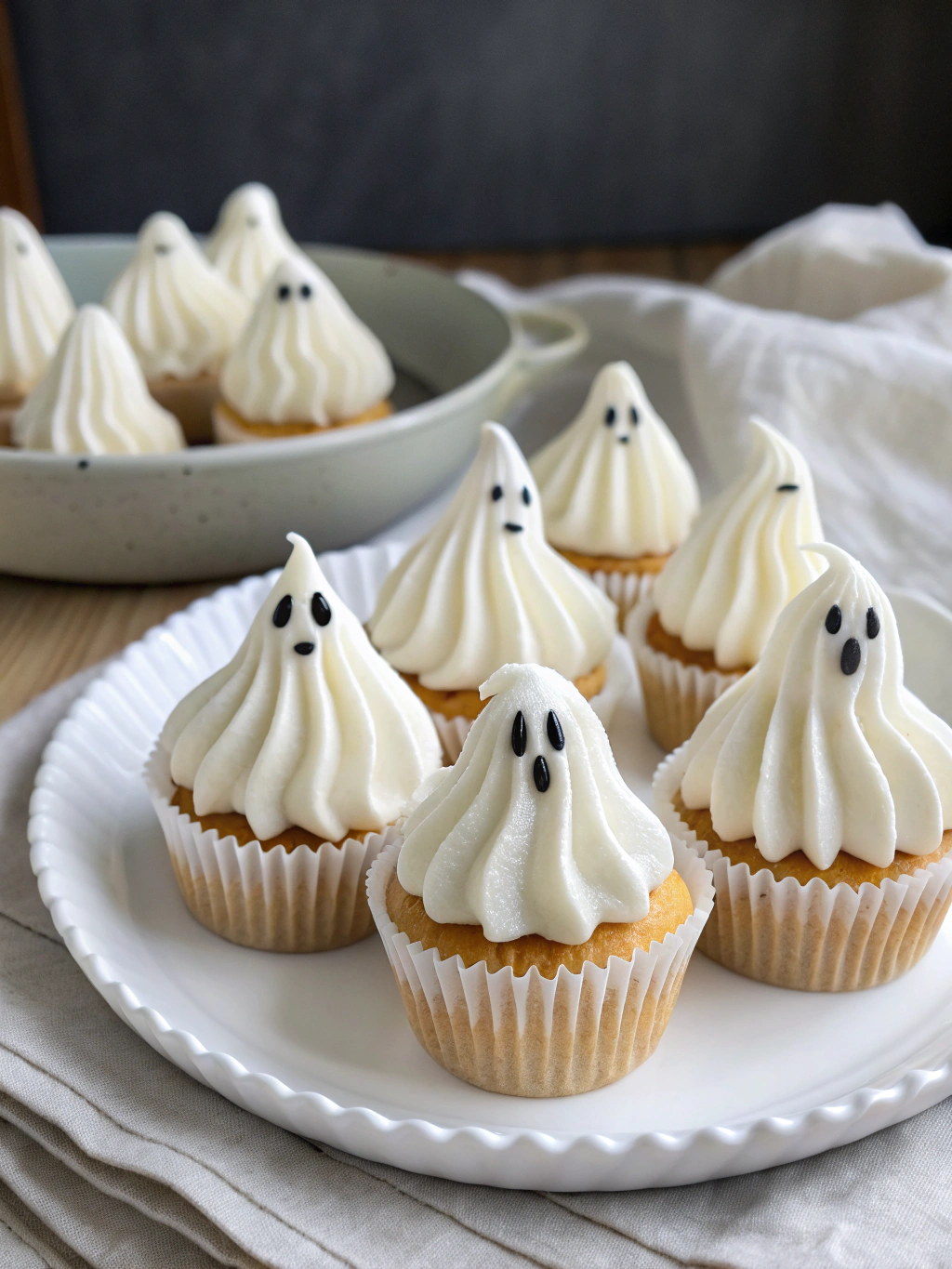This guide teaches you how to make juicy, flavorful spinach and cheese stuffed chicken breast. We’ll cover ingredients, preparation, cooking, and serving suggestions. We’ll also offer tips for making it healthier and adapting it to different tastes.
Picking the Perfect Chicken Breasts
Ingredients
| Ingredients | Quantity | Note |
|---|---|---|
| Chicken breasts | 2-4 | About 1 inch thick |
| Spinach | 10 oz | Fresh or frozen |
| Cheese | 4 oz | Feta, ricotta, or mozzarella |
| Garlic powder | 1 tsp | To taste |
| Onion powder | 1 tsp | To taste |
| Dried oregano | 1 tsp | To taste |
| Black pepper | To taste |
Choose chicken breasts that are about 1 inch thick. Larger breasts are fine, but you may need to butterfly them (slice them horizontally to make them thinner) for even cooking. Smaller breasts cook faster but might be harder to stuff.
Checking for Freshness
Look for chicken breasts that are firm to the touch and don’t have a foul odor. The color should be a pale pink. Avoid breasts with discoloration or slimy areas. Check the sell-by date.
Boneless, Skinless, or Other?
Boneless, skinless chicken breasts are easiest to work with for stuffing. The skin adds extra fat and may make the stuffing soggy. You can use bone-in breasts, but you’ll need to remove the bones and adjust cooking time.
Using Other Chicken Cuts
Chicken thighs can also be stuffed but they will cook slower than breasts. Keep this in mind when planning the cooking time.
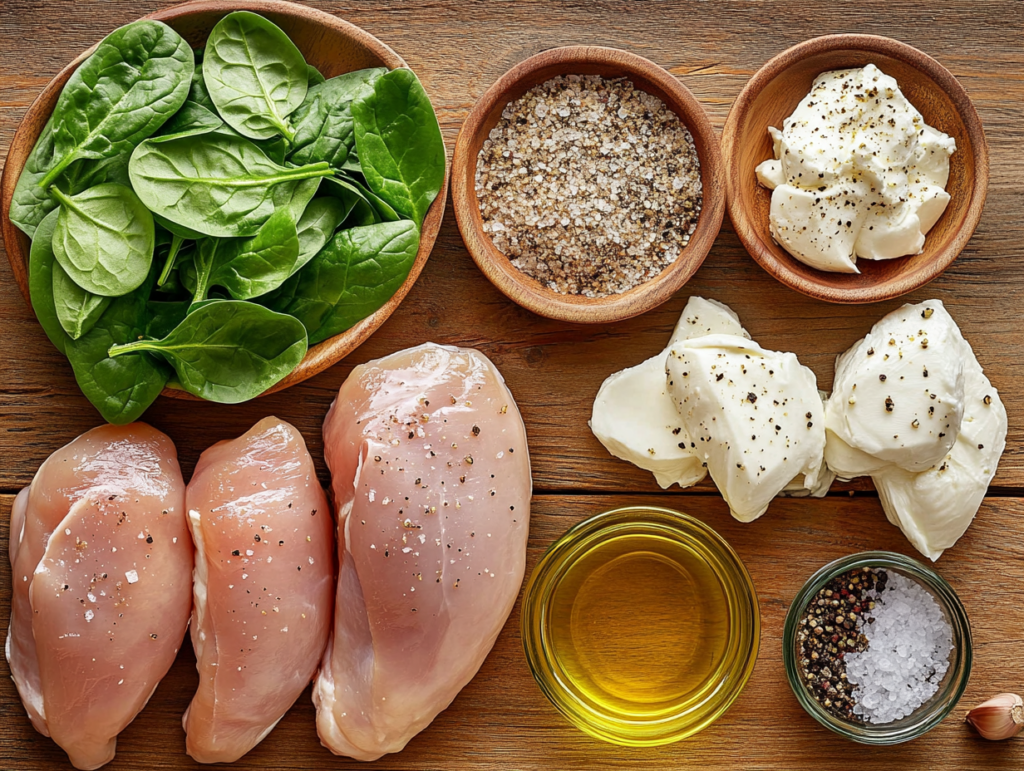
Preparing the Spinach and Cheese Filling
Cooking the Spinach
Wash the spinach well. Cook it in a pan over medium heat until it wilts. You can also microwave it. Once cooked, squeeze out excess water. This prevents a soggy filling.
Choosing Your Cheese
Many cheeses work well. Popular choices include feta, ricotta, and mozzarella. Experiment! Feta adds a salty tang. Ricotta is creamy and mild. Mozzarella melts easily.
Adding Flavor
Use herbs and spices to boost the taste. Garlic powder, onion powder, and dried oregano all work well. A little black pepper adds a kick.
Filling Variations
Want to add more? Sun-dried tomatoes give a sweet and tangy flavor. Chopped mushrooms add a meaty texture. Experiment to find your favorite combination.
Stuffing Chicken Breasts Without Tearing
Creating a Pocket in the Chicken
Place the chicken breast on a cutting board. Using a sharp knife, cut a horizontal slit about halfway through the thickest part of the breast. Be careful not to cut all the way through. Gently open the slit to create a pocket. For larger breasts, you might need to butterfly them first (slice them horizontally to make them thinner).
Securing the Filling
Once you’ve filled the pocket, there are a few ways to close it. You can use toothpicks to secure the edges. Alternatively, you can use kitchen twine to tie the breast closed. Both methods keep the filling inside during cooking.
Preventing Leaks
To stop the filling from leaking, make sure the chicken is fully cooked. Overcooked chicken can dry out, but undercooked chicken may allow the filling to leak. Also, don’t overfill the pocket. Leave a little space to allow for expansion during cooking.
Alternative Stuffing Methods
If you’re worried about tearing, try creating a small opening at one end of the chicken breast and carefully spooning in the filling. Then, seal the opening.
Cooking Your Stuffed Chicken Breasts
Baking Stuffed Chicken
Preheat your oven to 375°F (190°C). Bake stuffed chicken breasts for 25-30 minutes, or until the internal temperature reaches 165°F (74°C). Use a meat thermometer to check. Baking keeps the chicken moist.
Pan-Frying Stuffed Chicken
Heat a tablespoon of oil in a large skillet over medium heat. Cook the chicken for about 5-7 minutes per side, or until golden brown and cooked through. Pan-frying gives the chicken a nice crust. Check the internal temperature with a meat thermometer; it should be 165°F (74°C).
Grilling Stuffed Chicken
Preheat your grill to medium heat. Grill the chicken for about 4-6 minutes per side, or until cooked through. Grilling adds a smoky flavor. Use a meat thermometer; the internal temperature should be 165°F (74°C).
Using a Meat Thermometer
A meat thermometer is the best way to ensure your chicken is cooked safely. Insert the thermometer into the thickest part of the chicken breast. The temperature should be 165°F (74°C) for safe eating. Don’t guess!
Serving Your Stuffed Chicken
Side Dishes for Stuffed Chicken
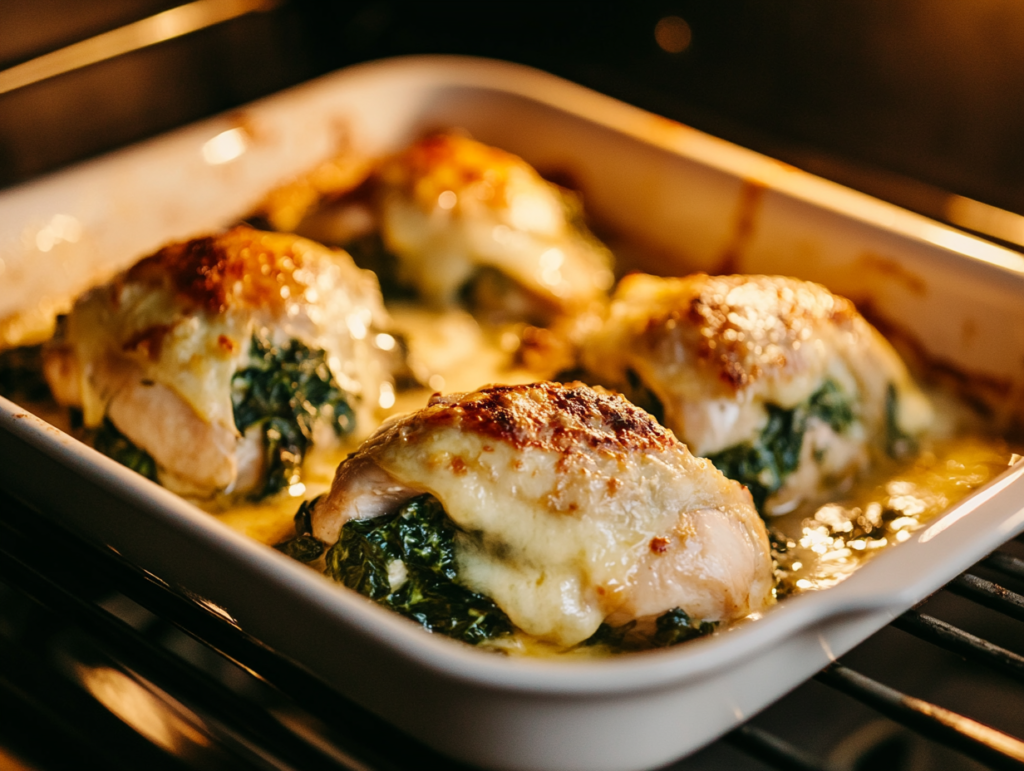
Roasted vegetables like broccoli, carrots, and potatoes add color and nutrition. Fluffy rice is a simple, satisfying choice. A fresh salad with a light vinaigrette offers a refreshing contrast to the richness of the chicken.
Sauces to Complement Your Dish
A lemon butter sauce adds a bright, tangy flavor. Creamy pesto provides a delicious herbal twist. A simple gravy also works well. Experiment with different flavors to find your favorites.
Healthier Stuffed Chicken Breast
Lower-Fat Cheese Choices
Instead of using high-fat cheeses, try lower-fat options. Part-skim ricotta or reduced-fat mozzarella still taste great and have fewer calories. Feta cheese can be used sparingly to add flavor.
Less Sodium
Reduce the amount of salt you add. Many cheeses already have salt, so you may not need to add much extra. Use herbs and spices for flavor instead of extra salt.
More Vegetables
Add more vegetables to the filling! Chopped bell peppers, mushrooms, or zucchini add extra nutrients and flavor. These also help make the filling more moist.
Troubleshooting Stuffed Chicken Breasts
Dry Chicken Breasts
Dry chicken is a common problem. To prevent this, don’t overcook the chicken. Use a meat thermometer; the internal temperature should be 165°F (74°C). Baking is a good way to keep the chicken moist. Also, make sure you’re not overfilling the chicken breast. Too much filling can make the chicken dry out.
Leaky Filling
A leaky filling means the juices from the filling ran out during cooking. This happens when you overfill the chicken breast or when the chicken isn’t cooked properly. Use toothpicks or kitchen twine to close the opening in the chicken breast securely. Don’t overfill the pocket; leave some space for the filling to expand. Make sure the chicken is fully cooked to prevent leaks.
Filling Variations: Flavor Combinations
Cheese Choices
We already talked about feta, ricotta, and mozzarella. Let’s explore more! Try creamy goat cheese for a tangy twist, or sharp cheddar for a stronger flavor. Even a little Parmesan adds a nice salty bite.
Herb and Spice Combinations
Don’t be afraid to experiment! A mix of Italian herbs (basil, oregano, thyme) is classic. A dash of nutmeg adds warmth. A pinch of red pepper flakes provides a little heat. Fresh herbs always taste better than dried ones, if you have them.
Creative Flavor Combinations
- Mediterranean Delight: Feta, sun-dried tomatoes, oregano, and a touch of olive oil.
- Spicy Southwestern: Monterey Jack, diced green chilies, cumin, and a little chili powder.
- Italian Herbs: Ricotta, fresh basil, parsley, garlic powder, and a sprinkle of Parmesan cheese.
- Garlic and Herb: Mozzarella, garlic powder, onion powder, dried oregano, and a little black pepper.
Remember, taste as you go and adjust the seasonings to your liking. Have fun creating your perfect spinach and cheese stuffed chicken breast!
Frequently Asked Questions
How thick should my chicken breasts be?
Aim for chicken breasts that are about 1 inch thick. Thicker breasts might need to be butterflied (sliced horizontally) for even cooking. Thinner breasts cook faster.
What kind of cheese works best?
Many cheeses work well! Feta adds a salty taste, ricotta is creamy, and mozzarella melts easily. Experiment to find your favorite.
Can I use frozen spinach?
Yes, you can use frozen spinach. Just make sure to thaw and squeeze out all the excess water before adding it to the filling. This prevents a soggy filling.
How do I keep the filling from leaking?
Don’t overfill the chicken breast. Secure the opening with toothpicks or kitchen twine. Make sure the chicken is fully cooked; a meat thermometer is your best friend here! Aim for 165°F (74°C).
What are some good side dishes?
Roasted vegetables, rice, and a fresh salad are all great choices. You can also try a lemon butter sauce or creamy pesto.
Conclusion: Enjoy Your Stuffed Chicken!
Your Delicious Meal Awaits
This guide showed you how to make tasty spinach and cheese stuffed chicken breast. You learned to pick the right chicken, prepare the filling, stuff the chicken without tearing it, and cook it perfectly. We also covered serving suggestions and tips for healthier versions.
Experiment with Flavors
Remember, cooking is about having fun! Try different cheeses, herbs, and spices. Add other veggies to your filling. Find what you like best!
Safe Cooking Practices
Always use a meat thermometer to make sure your chicken is cooked to a safe internal temperature of 165°F (74°C). This is very important.
This guide helps you create delicious and satisfying spinach and cheese stuffed chicken breast. Remember to follow the steps carefully and experiment with different flavors to find your perfect recipe!
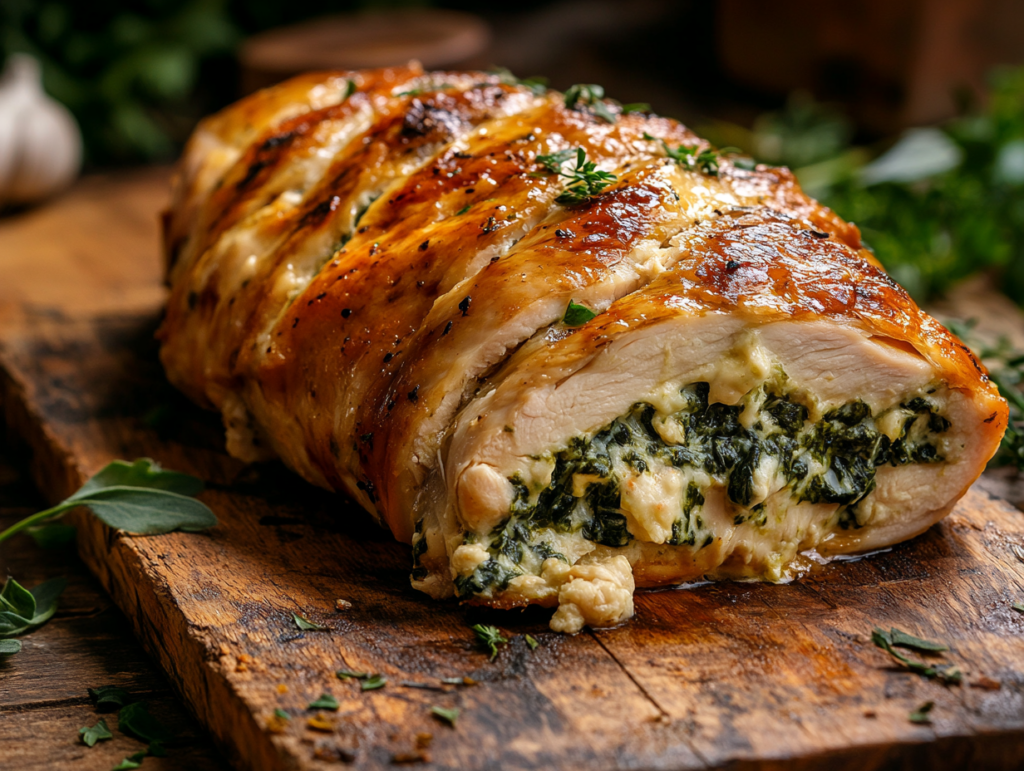
For more delicious chicken recipes, you might also love this Creamy Pesto Chicken, a rich and flavorful dish that pairs beautifully with pasta or roasted veggies. If you enjoy stuffed chicken dishes, try this Chicken Cream Cheese Recipe for another creamy and satisfying meal. Looking for a quick and easy baked dish? This Baked Salsa Chicken is a flavorful option packed with spices and melted cheese!
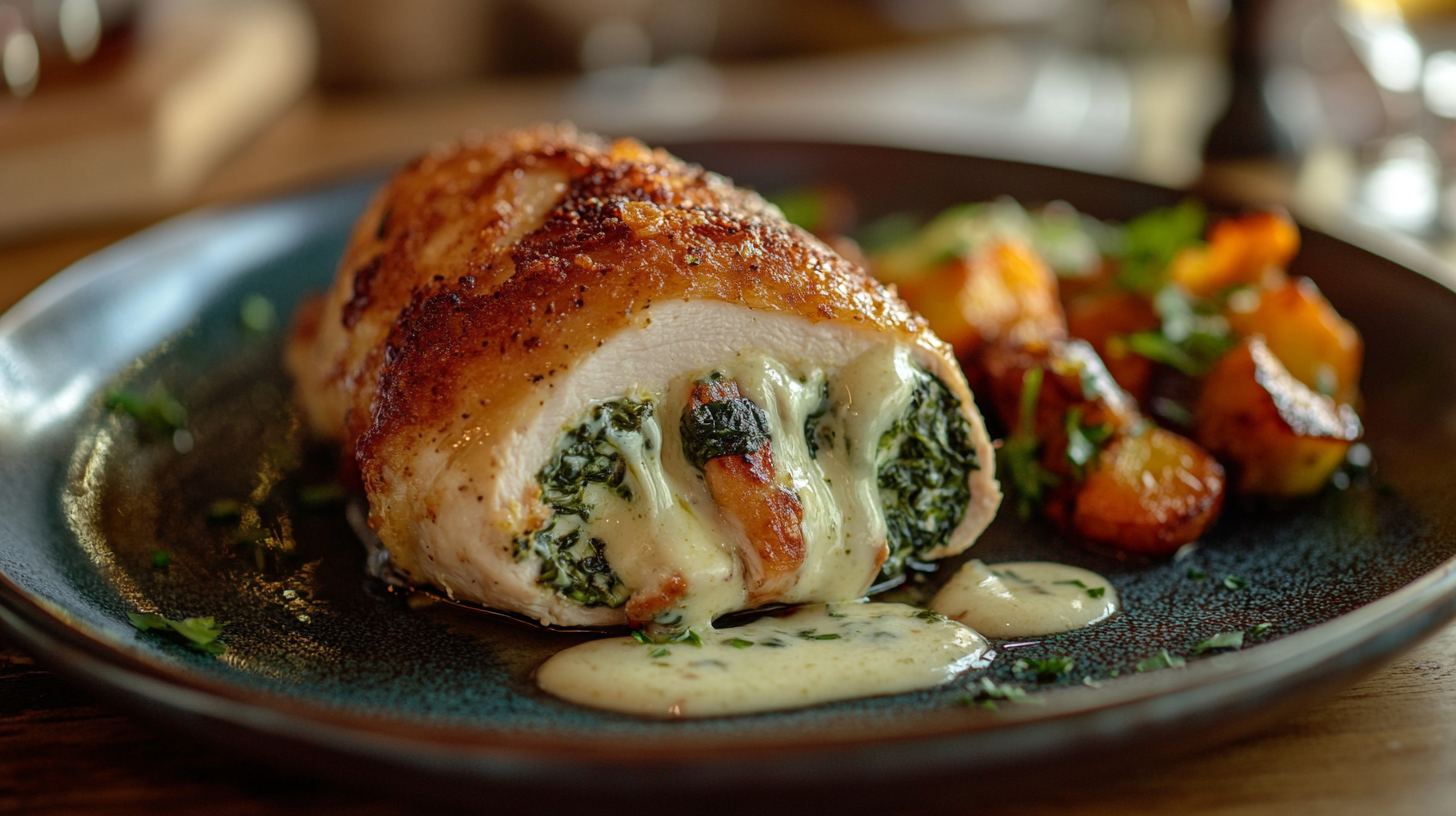
Spinach and Cheese Stuffed Chicken Breast
Ingredients
Main Ingredients
- 2-4 pieces Chicken breasts About 1 inch thick
- 10 oz Spinach Fresh or frozen
- 4 oz Cheese Feta, ricotta, or mozzarella
Seasonings
- 1 tsp Garlic powder To taste
- 1 tsp Onion powder To taste
- 1 tsp Dried oregano To taste
- To taste Black pepper
Instructions
Preparation
- Wash the spinach well and cook it in a pan over medium heat until it wilts. Squeeze out excess water to prevent a soggy filling.
- Cut a horizontal slit about halfway through the thickest part of each chicken breast to create a pocket.
- In a bowl, combine cooked spinach, cheese, garlic powder, onion powder, dried oregano, and black pepper.
- Stuff the chicken breasts with the spinach and cheese mixture and secure the openings with toothpicks or kitchen twine.
Cooking
- Preheat the oven to 375°F (190°C) and bake the stuffed chicken for 25-30 minutes or until the internal temperature reaches 165°F (74°C).
- Alternatively, heat oil in a skillet and pan-fry the chicken for about 5-7 minutes on each side until golden brown and cooked through.
- You can also grill the chicken over medium heat for 4-6 minutes per side until fully cooked.
Serving
- Serve the stuffed chicken with side dishes like roasted vegetables, rice, or a fresh salad.
- Consider adding a sauce like lemon butter or pesto to complement the dish.

